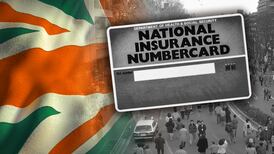The Hyperloop is a theoretical high-speed transportation system consisting of a low-pressure tube with capsules transported at high speeds from point A to point B along the length of the tube.
Supported on a cushion of air, the capsules would also contain pressurised air, not unlike a plane, and its speed could be controlled by a magnetic linear accelerator positioned at different stations along the main tube.
The technology, whose potential will be discussed in a special presentation at next month's Web Summit in Dublin, is both cutting edge and yet strangely familiar. Graphic renderings of the system look very similar to the ficitional Monorail, featured in The Simpsons. In fact, travel like this was first suggested back in the 1870s. "The first patent for vacuum travel inside a tube was made back in 1904," says Dirk Ahlborn, chief executive of Hyperloop Transportation Technologies, who spoke at the recent SXSW Eco event in Austin, Texas.
It is SpaceX’s bold yet viable response to the proposed California high-speed rail project, a planned statewide mass “bullet” transit system Musk has described as “both one of the most expensive per mile and one of the slowest in the world”.
Prototype
As with so many of Musk’s plans, one might be forgiven for thinking the Hyperloop is a wonderful concept, but unlikely to be seen any time soon. However, the company recently announced plans to start construction on a prototype for the Quay Valley, a proposed 75,000-resident solar power city in Kings County, California.
“County officials say we should be able to start building work by August 2016,” says Ben Cooke, director of media relations for the Hyperloop.
The five-mile stretch, which will be located almost equidistant between Los Angeles and San Francisco, is expected to cost about $150 million (€131 million) and be completed by 2018.
The company also plans not to charge passengers for the service. Using a combination of solar, wind, kinetic and, in some cases, even geothermal energy, the proposed system will be able to produce more energy than it is actually using.
Branded experience
“The system itself will be generating power, which we’ll be sending back to the grid,” says Cooke. “Being power-negative, this will already bring ticket prices down considerably. But we’re looking into other funding possibilities. If we can guarantee a captive audience for each journey, perhaps we could subject passengers to some form of branded experience.”
The advantages don’t stop there. Ultimately, the system of giant suspended tubes will be able to reach speeds of up to 1,200km/h. “We will be able to commute at the speed of sound,” says Ahlborn. “Plus it can never crash and is immune to weather.”
Ahlborn also claims a proposed Hyperloop between LA and San Francisco would cost $6 billion compared to the $65 billion proposed for the high-speed bullet rail already planned for California.
“There isn’t a railway in the world that’s profitable and yet here we are proposing a system that can produce its own energy and generate additional income,” he says.
There is already a lot of interest in the project. The company believes this is down not only to the viability of the technology, but also the business model it has developed: a kind of crowd-funding on a global scale.
“We are asking publicly traded Fortune 500 companies to volunteer in exchange for company stock,” says Cooke. “This is the kind of approach usually taken by start-ups working out of garages. But we are now a global enterprise with 450 people onboard worldwide.”
While the whole project is California-centric, this is more circumstantial than anything else. “The narrative has focused on the LA to San Francisco route because it makes a lot of sense,” says Cooke.
Bureaucratic
In reality, the company believes the first major Hyperloop will be built elsewhere. “Plans for tube travel date back to the 1960s and have already been proposed for cities in the US and in Europe,” says Ahlborn. “All these projects failed though, not because they weren’t possible but because the US and Europe are too bureaucratic. There are too many decision-makers. In all likelihood we’ll see the first major Hyperloop somewhere in Asia or Africa.”
Cooke says: “In the short term there is probably a greater need for something like this in Asia. There are some cities in India that are bursting at the seams and we have spoken with officials trying to find better ways to move people in and out of urban centres more quickly.”
















